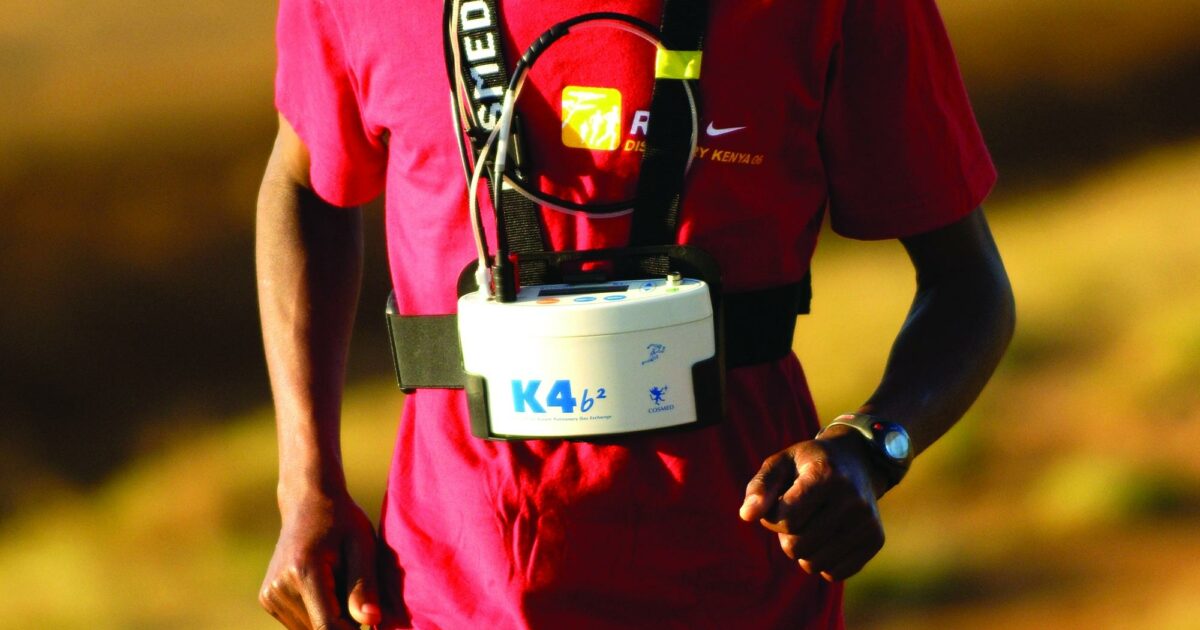Unearthing the hidden treasures of human potential, treading upon the unexplored territories of endurance, lies a captivating acronym nestled within the realm of physical fitness – CPET. Curiosity dances in our minds as we embark upon this expedition, seeking to unravel the remarkable depths of this enigmatic term. CPET, short for Cardiopulmonary Exercise Testing, holds within its embrace a universe of untapped knowledge, inviting us to delve into the inner workings of our bodies. With an insatiable thirst for understanding, let us embark on this journey, casting aside preconceived notions and embracing the enigmatic allure of CPET.
What is CPET and How does it Work?
CPET, or cardiopulmonary exercise testing, is a diagnostic tool used to evaluate a person’s heart and lung function during exercise. By measuring various physiological parameters, CPET provides valuable insights into an individual’s cardiovascular fitness and overall health. This non-invasive test can help doctors diagnose and monitor conditions such as heart disease, pulmonary disorders, and even certain metabolic disorders.
During a CPET, the patient will typically undergo a series of exercises on a stationary bike or treadmill while wearing a specialized mask to measure their oxygen intake and carbon dioxide output. This allows healthcare professionals to assess their cardiorespiratory fitness and identify any limitations or abnormalities. The collected data is then analyzed to determine the individual’s maximum oxygen consumption (VO2 max), or the maximum amount of oxygen their body can utilize during exercise.
CPET provides numerous benefits, including:
- Accurate evaluation of exercise tolerance and capacity.
- Identification of any underlying cardiovascular or respiratory abnormalities.
- Customization of exercise prescription for rehabilitation or training purposes.
- Assessment of treatment effectiveness and disease progression.
- Prediction of surgical outcomes and risk stratification.
| Parameter | Normal Range |
|---|---|
| VO2 Max | >35 ml/kg/min |
| Heart Rate | 60-100 bpm |
| Breathing Efficiency | 15-20 breaths/min |

Exploring the Benefits and Limitations of CPET
Benefits of CPET
- Enhanced Fitness Assessment: CPET, or Cardiopulmonary Exercise Testing, offers a comprehensive evaluation of an individual’s cardiac and pulmonary function during exercise. It provides valuable information about a person’s fitness level, aerobic capacity, and overall health.
- Diagnosis and Monitoring: CPET is instrumental in diagnosing and monitoring various medical conditions. It helps identify cardiovascular or pulmonary limitations, such as heart disease, asthma, or chronic obstructive pulmonary disease (COPD), allowing for appropriate treatment plans and adjustments to be made.
- Customized Training Programs: CPET results can aid in the development of personalized exercise programs. With a thorough understanding of an individual’s limitations and capabilities, healthcare professionals can design and adjust exercise regimens tailored to specific needs, maximizing effectiveness and minimizing potential risks.
- Objective Assessment: Unlike traditional exercise tests, CPET offers an objective measurement of fitness and functional capacity. Its precise data on oxygen consumption, carbon dioxide production, and heart rate helps healthcare professionals accurately evaluate a person’s exercise tolerance and track progress over time.
Limitations of CPET
While CPET brings numerous benefits, it also has limitations that should be considered:
- Complexity: CPET requires specialized equipment, trained personnel, and a controlled environment, making it relatively complex and costly compared to other fitness assessments.
- Physical Effort and Discomfort: CPET involves rigorous exercise, which can be challenging and uncomfortable for certain individuals, particularly those with limited fitness or existing medical conditions.
- Health Risks: As with any physical test, CPET carries a slight risk of potential complications, such as cardiac arrhythmias or breathing difficulties. These risks are generally low but should be weighed against the potential benefits.
- Limited Accessibility: Due to its complexity and requirement for specialized facilities, CPET may not be readily available in all healthcare settings or locations, limiting its accessibility to certain populations.
Despite the limitations, CPET remains a valuable tool in assessing fitness and diagnosing specific conditions. Its benefits often outweigh the drawbacks, especially when used in conjunction with other clinical and functional assessments.

Key Considerations when Using CPET
When utilizing CPET (Cardiopulmonary Exercise Testing) in clinical practice, there are several important factors to consider to ensure accurate interpretation of test results and optimal patient care. These key considerations will help healthcare professionals make informed decisions and provide personalized treatment plans based on the obtained data.
- Selection of Suitable Patients: The appropriateness of CPET should be assessed on a case-by-case basis, ensuring that patients are physically capable of performing the test and are likely to benefit from the information obtained. It is crucial to consider the patient’s overall health, exercise tolerance, and the relevance of the test results to their condition.
- Appropriate Equipment and Environment: Utilizing the right equipment and ensuring a suitable testing environment is essential for accurate measurements during CPET. This includes properly calibrated exercise machines, gas analyzers, and an ergometer. Additionally, the testing room should be well-ventilated and comfortable for the patient.
- Technical Knowledge and Expertise: Performing a CPET requires specialized knowledge and expertise. Healthcare professionals conducting the test should be well-trained in its administration, interpretation, and potential complications. This ensures reliable and clinically meaningful results that can inform treatment decisions.
- Standard Protocols: Following established protocols for CPET testing is vital to ensure consistency and reliable outcomes across different patients and research studies. These protocols often include predefined stages and criteria for stopping the test, making it easier to compare and analyze results.
By considering these important factors, healthcare professionals can optimize the use of CPET and leverage its benefits in providing valuable information about a patient’s cardiopulmonary fitness and overall health status. This knowledge empowers personalized care, tailored exercise prescriptions, and better management of various medical conditions.

Optimizing the Use of CPET in Clinical Practice
In today’s rapidly evolving field of medicine, it is crucial to stay up to date with the latest advancements and techniques. One such technique that has gained significant attention is Cardiopulmonary Exercise Testing (CPET), a non-invasive procedure that provides valuable insights into a patient’s cardiovascular and respiratory systems. With its ability to assess exercise tolerance, identify physiological limitations, and guide treatment decisions, has become essential.
So, how can healthcare professionals make the most out of CPET? Here are some key factors to consider:
- Patient Selection: Carefully selecting patients who would benefit from CPET can enhance the diagnostic accuracy and therapeutic efficacy of this assessment. Conditions such as heart failure, pulmonary diseases, and preoperative risk assessment can greatly benefit from CPET.
- Standardized Protocols: Following standardized protocols for CPET administration ensures consistency and comparability of results across different clinical settings. Adhering to established guidelines will enable healthcare practitioners to make accurate and reliable assessments.
- Data Interpretation: Proper interpretation and analysis of CPET data are vital for developing individualized treatment plans. Understanding parameters such as peak oxygen consumption, anaerobic threshold, and ventilatory efficiency can guide therapeutic decisions and optimize patient outcomes.
| Factors to Consider | Benefits |
|---|---|
| Patient Selection | Enhanced diagnostic accuracy Improved therapeutic efficacy |
| Standardized Protocols | Consistency across settings Reliable assessments |
| Data Interpretation | Personalized treatment plans Optimized patient outcomes |
By , healthcare professionals can elevate their patient care, leading to improved treatment outcomes and quality of life for individuals with various cardiovascular and respiratory conditions. With ongoing research and advancements in this field, integrating CPET into routine clinical practice is an investment in the future of healthcare.
The Conclusion
As we come to the end of our exploration into the fascinating world of “cpet”, one thing becomes abundantly clear – the possibilities are endless. From its humble beginnings as a relatively unknown acronym, cpet has emerged as a force to be reckoned with, captivating minds and transforming industries along the way.In our journey, we have witnessed the power of cpet to revolutionize traditional practices, pushing boundaries and unveiling new perspectives. Its innovative approach and adaptable nature have propelled it to the forefront of technological advancements, igniting excitement and curiosity in a wide range of sectors.
But what truly sets cpet apart is its ability to bridge the gap between imagination and reality. Its innovative algorithms and intricate systems seamlessly bring to life what was once perceived as mere fantasies. From virtual realms that take us on breathtaking adventures to augmented realities that enhance our everyday experiences, cpet has unlocked the doors to previously uncharted territory.
Yet, let us not forget the individuals behind this revolutionary concept – the brilliant minds who conceptually weaved together the fabric of cpet’s existence. From computer engineers to data scientists, visionaries to dreamers, it is their relentless pursuit of excellence that has given birth to this transformative force.
As we conclude this chapter on “cpet”, it is only fitting to reflect on the potential still left untapped. With each passing day, we inch closer to unraveling the full extent of cpet’s capabilities, and with it, a future full of infinite possibilities. One can only imagine how cpet will continue to reshape our world, pushing the boundaries of our imagination and altering the very fabric of our daily lives.
So, as we bid farewell to this informative journey, let us carry the torch of curiosity, embarking on new adventures, and embracing the ever-evolving world of cpet. There are undoubtedly countless discoveries to be made, and we can only wonder what marvels lie just beyond the horizon. For now, it’s time to step boldly into the future, guided by the trailblazing spirit of cpet. The journey continues, and we are honored to witness it unfold.

